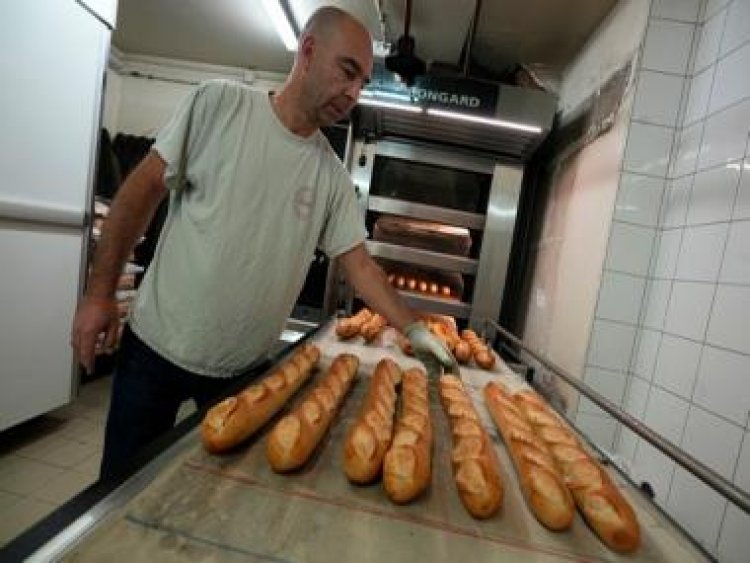French baguette gets UNESCO heritage tag: The story behind this '250 grammes of magic and perfection'
French baguette gets UNESCO heritage tag: The story behind this '250 grammes of magic and perfection'

A baguette a day keeps the doctor away – well at least in France.
A staple of the country, the baguette, has been voted to be included in United Nations Educational, Scientific and Cultural Organisation’s (UNESCO) Intangible Cultural Heritage list.
UNESCO’s director general Audrey Azoulay said, “This celebrates the French way of life: the baguette is a daily ritual, a structuring element of the meal, synonymous with sharing and conviviality.”
The Paris wing of the UN’s heritage body announced that it added the delicacy for its “artisanal know-how and culture of baguette bread”. The bread joined 600 other items on the list.
UNESCO has just made the French baguette part of the Intangible Cultural Heritage of humanity, and the French delegation is wildin out there pic.twitter.com/s1UbutiVBZ
— Jules Darmanin (@JulesDrmnn) November 30, 2022
Rejoicing the victory, a teacher at the Ferrandi culinary school in Paris Christophe Moussu broke the news to his students during a baguette-making class, said according to Reuters, “Ladies and gentlemen, that’s it, we’re in the UNESCO World Cultural Heritage list, it’s been recognised. I’m very happy.”
What’s the story behind baguettes?
Baguettes don’t have just one story of their origin, it has several.
Legend has it that French Emperor Napoleon Bonaparte ordered that bread must be moulded into long and thin sticks so they are fit for soldiers to carry around in their pockets.
Another story goes like this: in 1898 when the construction of the Paris Metro began, labours from all over the country were employed to work on the project. These workers with diverse backgrounds used to engage in violent arguments and so in order to outlaw knives, bakers were asked to make bread that could be easily torn rather than being cut into pieces.
Over the years, as wheat became cheaper and readily available, no French person was seen without it. In fact, it was so much in demand that in 1920, a law set the minimum weight of 80 grams and a maximum length of 40 cm.
The rise of baguettes was exponential and people have always loved digging their teeth into the soft crumb of the bread. However, according to AFP, since 1970, 400 bakeries have closed down each year.
But the baguette has very much become the identity of France with President Emmanuel Macron saying it was “envied around the world”. After the announcement, he even remarked, according to BBC, that the baguette is “250 grams of magic and perfection in our daily lives.”
This form of bread is made only with flour, water, salt and yeast. It is crucial that the dough sits for at least 15 to 20 hours at a temperature between four to six degrees Celsius, as per the French Bakers Confederation.
What is UNESCO’s intangible heritage?
According to UNESCO Intangible Cultural Heritage (IHC) “Indicates ‘the practices, representations, expressions, knowledge, skills – as well as the instruments, objects, artifacts and cultural spaces associated therewith – that communities, groups and, in some cases, individuals recognize as part of their Cultural Heritage.”
The tag and the honour that it brings with it include monuments, cultural objects, food items, age-old traditions, performing arts, social practices, rituals, festivals and traditional crafts.
250 grammes de magie et de perfection dans nos quotidiens. Un art de vivre à la française. Nous nous battions depuis des années avec les boulangers et le monde de la gastronomie pour sa reconnaissance. La baguette est désormais au patrimoine immatériel de l’Unesco ! https://t.co/91joZkQPI2
— Emmanuel Macron (@EmmanuelMacron) November 30, 2022
UNESCO says that through Intangible Cultural Heritage, it hopes to maintain cultural diversity across the world. An ability to understand intangible cultural heritage helps different communities to engage in intercultural dialogue and encourages mutual respect for different ways of life.
Another point behind the list is to safeguard elements that require measures to keep them alive. The list also helps to mobilise international support and cooperation for stakeholders to undertake safeguarding measures.
Other food items on the list
Baguette is not the only thing that is on the Intangible Cultural Heritage list.
In 2010, France’s Gastronomic Meal was added to the Representative List of UNESCO’s Intangible Cultural Heritage, according to Outlook Travel. The meal is a customary social practice that is devoured on special events like birthdays, weddings, anniversaries and achievements and the like.
Next up is Washoku, a traditional Japanese cuisine that was added to the list in 2013. The dish is made of local ingredients like rice, fish, vegetables and edible wild plants. Washoku is made with a great deal of respect for nature and the resources with which the delicacy is made.
A little bit of pizza never hurts and so the world’s favourite food item has also made its way to the list. But there is a Neapolitan way of making pizza called pizzaiolo. Under this technique, according to Associazione Verace Pizza Napoletana, the dough is made with high-protein flour and is kneaded by hand. The pizza is topped either with fior di latte or mozzarella di bufala, San Marzano tomatoes, basil, and extra-virgin olive oil.
With inputs from agencies
Read all the Latest News, Trending News, Cricket News, Bollywood News,
India News and Entertainment News here. Follow us on Facebook, Twitter and Instagram.
What's Your Reaction?



























































